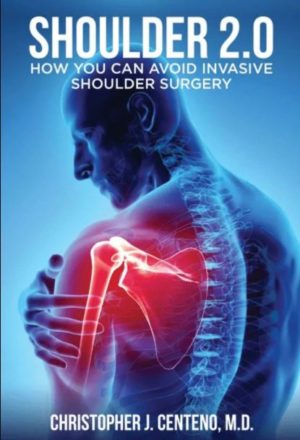If you have arthritis in your shoulder joint, does this mean that a surgery to fix your rotator cuff tear is more or less likely to fail? A new study investigated that issue and found some surprising things. So let’s review what we know about rotator cuff tears and then let’s delve into what the new research found.
What is the Rotator Cuff?
While the rotator cuff is a single structure, it has subparts that we call different muscles and tendons in the shoulder. The purpose of the rotator cuff is to provide stability to the shoulder and support a full range of motion necessary for the proper functioning of this highly complex joint. The shoulder joint consists of a shallow ball and socket that allows for not only simple lifting and reaching motions but also rotational motions.
The shoulder joint and rotator cuff can become overloaded and overstressed. Rotator cuff tears are particularly common when performing a lifting motion over the head. However, they can also occur with the normal wear and tear of aging, and these types of rotator cuff tears, often picked up on an MRI, shouldn’t be an automatic diagnosis for what’s causing shoulder pain, as these normal tears exist as we age with or without shoulder pain. And, understandably, performing surgery on a rotator cuff tear that isn’t actually causing your shoulder pain isn’t going to help.
Operating on rotator cuff tears can also lead to further problems, such as retears, particularly following repairs for larger rotator cuff tears. Now, it seems shoulder arthritis is another concern that must be considered before pulling the trigger on rotator cuff repair, particularly in those who experience retears after rotator cuff surgery…
Shoulder Arthritis Risk Higher in Those with Retears Following Rotator Cuff Repair
The new study set out to investigate the effect of mild shoulder osteoarthritis on the outcome of rotator cuff surgery in those with massive rotator cuff tears. The study consisted of two groups: participants in group A had mild arthritis, and participants in group B had no arthritis. The results? Rotator cuff retear rates following surgery were higher in group A compared to group B (31% and 25% respectively). Arthritis progression in group A was 12%, and, interestingly, group B (the group that did not have arthritis before surgery) had an arthritis progression rate of nearly 14%. Breaking down the arthritis progression rate a bit further in group A (the group that did have arthritis before surgery), 26% of those with rotator cuff retears had progression of their arthritis while 6% of those who healed had progression of their arthritis.
What does all of this mean? The study suggests that those who have shoulder arthritis before surgery for massive rotator cuff tears (compared to those who do not) are at a greater risk for retears after rotator cuff surgery. It also suggests that in those with pre-existing shoulder arthritis who experience retears compared to those who do not, there is a much greater risk for progression of the arthritis after surgery. Additionally, some (10 of 72 in this case) who don’t have shoulder arthritis prior to rotator cuff repair can expect to develop it after the surgery.
Why is this happening? To me, the answer is clear. No amount of careful stitching of a massive rotator cuff tear will allow the joint to be fixed back to its biomechanical state before the tear. Hence, we’re not really “repairing” the rotator cuff in the same way you repair a car engine when a part goes bad by dropping in a brand new part. In fact, we’re at best, salvaging a busted shoulder.
What Else Do We Know About Rotator Cuff Repair?
If not an obvious traumatic injury, what causes a rotator cuff tear in the first place? It’s pretty well known that the blood supply of the aging rotator cuff isn’t the best. In addition, the area may actually be deficient in healthy progenitor and stem cells. This means that as minor injuries happen over time as we age, with fewer repair cells to properly heal the tissue, it begins to fail, leading to tears in the process. Surgery, therefore, is only stitching up already weakened tissue that can’t fully self-heal, so surgery is often strating behind the proverbial 8-ball. In fact, one study found that adding stem cells to a rotator cuff repair improved healing and the strength of the repair following surgery.
We’ve found that in many cases, replenishing a patient’s own stem cells to the shoulder may be enough to stimulate healing. Learn more about this by watching my video below:
We also know from prior studies that long-term retear rates following rotator cuff repair for big tears are very high. Our feature study today was a two-year follow-up; however, one study looked at patients as far out as 54 months following rotator cuff repair for large tears and found an 81% retear rate.
The upshot? Having shoulder arthritis means that your rotator cuff surgery is more likely to fail. Why? Nobody knows for sure, but it could be due to the fewer natural stem cells found in arthritic shoulder joints. Hence, maybe stem cells should be a key component of non-surgical and surgical rotator cuff repair? That’s how we look at the problem…

